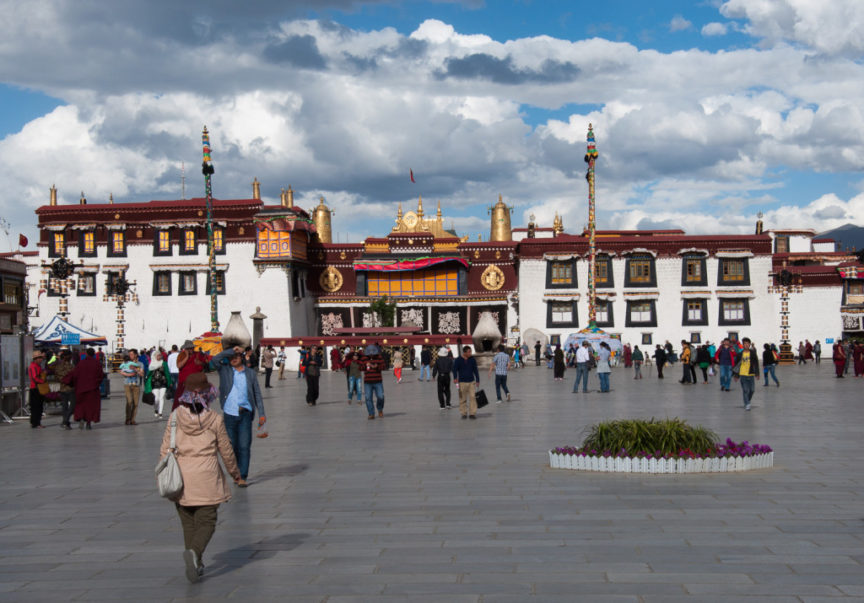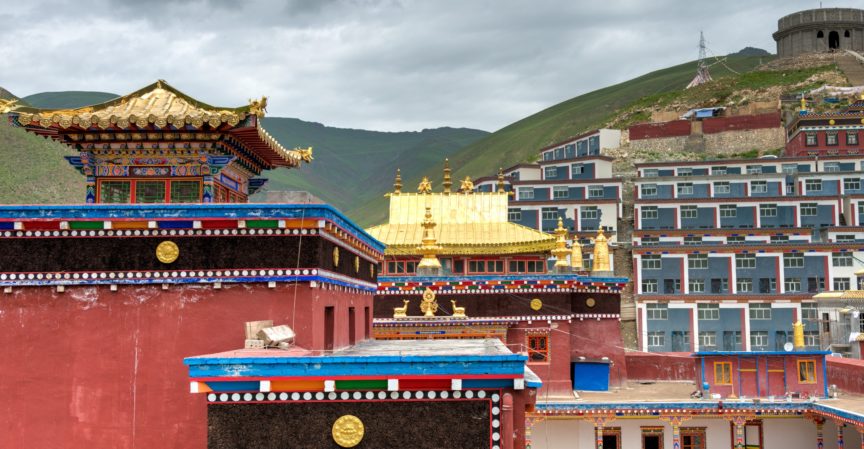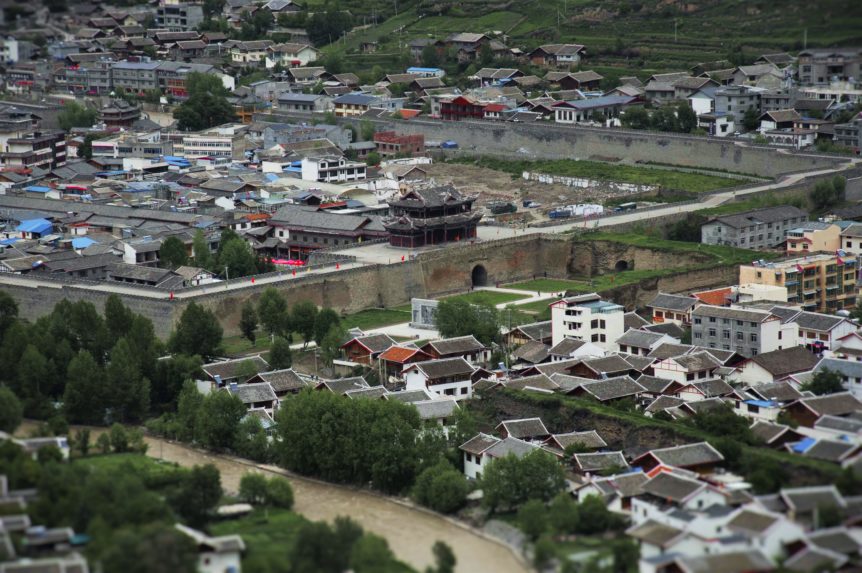Lhasa (ལྷ་ས་) has been considered the capital of the Tibetan peoples since as early as the 7th century. After conquering several surrounding kingdoms and two significant political marriages with Chinese and Nepali princesses, Songtsan Gampo became the first leader of a unified Tibetan Empire. He began construction on a palace which …
Yulshul (Yushu)
Mostly inhabited by Tibetans, Yushu (ཡུལ་ཤུལ།) is located in the Yushu Tibetan Autonomous Prefecture in the southern Qinghai province of China. The town, also referred to as Jyekundo (སྐྱེ་དགུ་མདོ།), Gyêgu, Gyêgudo or Jiegu is a multi-ethnic town with Tibetan nomadic residents and Han Chinese traders. Yushu lies at an elevation …
Tibetan Buddhism
Tibetan Buddhism (བོད་བརྒྱུད་ནང་བསྟན། ) is the major religion of Tibetans around the world. It covers the teachings of Mahayana Buddhism along with Tantric and Shamanic rituals, and is in some part influenced by Bon, the ancient, indigenous religion of Tibet. Apart from the traditions of koras, prayer flags, mantras, and …
Sungchu (Songpan )
Located in the North of Sichuan Province, with a population over 68,000, is Sungchu (ཟུང་ཆུ). Until recently it was an agriculturally dominated community, but with an influx of foreign students and travelers to and from Huanglong, Sungchu, known in Chinese Songpan County (松潘), has added tourism to being one of its …




